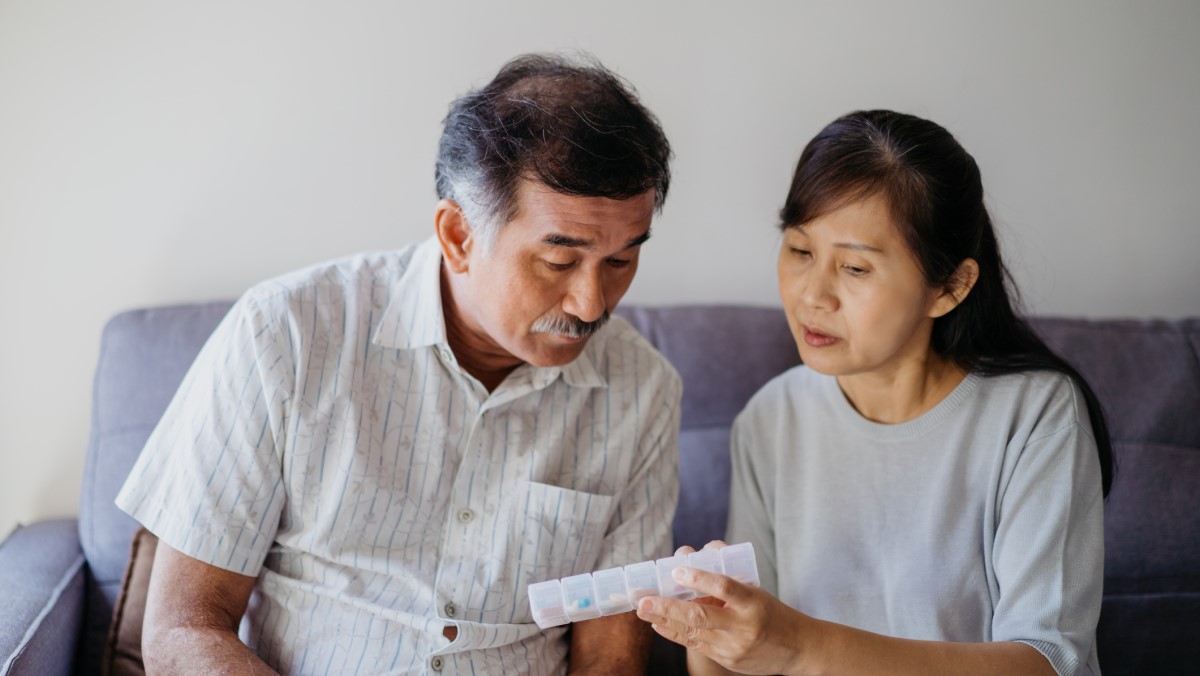The need to bridge the gap in the continuity of care for the elderly

Do you avoid going to the doctor? Chances are, you're not alone — especially if you’re 57 or older. In fact, older adults are much less likely to visit a doctor than any other age group. While there are many reasons for this, fear is the most common. Fear of getting bad news, fear of being uncomfortable, or fear of spending money they don't have are just a few reasons why seniors may avoid seeking medical care. [MTC1]
Regular checkups help ensure continuity of care, which is an essential component of preventive health, and vital for identifying and addressing health conditions early on—before they become more serious. With continuity of care, healthcare can be tailored more to each individual’s unique needs, which will help improve health outcomes among the population, especially older adults.
However, a new study by SMU’s Centre for Research on Successful Ageing (ROSA) reveals that just over a third of older adults surveyed have a family doctor that they regularly visit, despite how registering with a regular family doctor is a key component of the Healthier SG (HSG), a programme launched in March 2022 to help Singaporeans take steps towards better health.
ROSA, a multidisciplinary research centre based in SMU that aims to advance older adults' well-being, introduced the Singapore Life Panel, a monthly survey of Singaporeans aged 57-76 (inclusive). These findings were taken from the survey fielded in April 2022, which saw responses from 6,418 older adults.
The study also revealed that slightly more than half of the older adults surveyed visit polyclinics for health screenings (51.09 per cent), while 14.1 per cent do not go for health screenings at all. The remaining respondents tended to visit a regular GP or public hospital for their health screenings.
Even though a majority of seniors recognise the importance of regular healthcare, most respondents did not currently have a regular family doctor, which was defined as “one doctor that you regularly visit to treat most of your care needs”. This indicates a gap which needs to be bridged to ensure greater continuity of care for seniors.
“We see the merits of those with a regular physician, particularly when it comes to adhering to preventive health check-ups. As preventive health care is critical in ensuring successful ageing, we should continue to encourage those who remain apprehensive, especially in terms of raising awareness of the need for regular health checkups,” said Professor Paulin Straughan, Director, ROSA.
Effects of SES on health status
Studies over the years have painted a consistent picture: those with lower socioeconomic status (SES) have reduced access to care, leading to poorer health outcomes and higher mortality rates. This is due to several factors, including lower income levels, limiting access to quality care; lack of knowledge about navigating the complex healthcare system; and structural barriers such as transportation.
Interestingly, the ROSA study found that less than half of the older adults surveyed are aware of HSG, with the pattern being that respondents with a higher SES were more likely to be aware of the initiative. Fortunately, older adults appear to be receptive to this new healthcare approach, with over 85 per cent expressing their willingness to enrol in HSG. Even so, most respondents said they would want to see other doctors even if they were registered for HSG, with the most cited reason being the desire for a second opinion on their health conditions (67.4 per cent of respondents who would see other doctors even if enrolled).
Moreover, the survey results suggest that SES, the perception of how important regular health checkups are, as well as current healthcare utilisation patterns, are possible factors that tend to shape the willingness of respondents who register for HSG, as well as whether or not the respondents currently have a regular family doctor.
This disparity is therefore concerning as it could lead to poorer health outcomes for those who are least able to afford them. It amplifies the need for policymakers to close this information gap and ensure that all members of society have access to the same quality care.
Recommendations for implementation of the HSG initiative
Based on key findings from the survey, ROSA put together policy recommendations to help implement the HSG initiative. For one, efforts may be focused on the participation of older adults with lower SES profiles, including those living in three-room HDB flats or smaller, as well as citizens with lower levels of education. Awareness also needs to be raised about the importance of a regular family physician, and more needs to be done to increase the accessibility of healthcare and preventive care services for those who might not be able to afford them.
Furthermore, initiatives should emphasise the importance of regular health checkups, and how this and other preventive health measures can benefit the health of older adults in the long run. This is especially so as some older adults may not understand the importance and value of prevention, and therefore only resort to seeking healthcare at later stages of illness.
ROSA also highlighted that respondents who frequent polyclinics for healthcare advice were less likely to have a regular family doctor. With this in mind, polyclinics are an important avenue through which awareness on the importance of having a regular family doctor can be raised. Given that older adults who visit polyclinics regularly were also less willing to register for HSG, it is essential to direct more efforts towards reaching this demographic.


